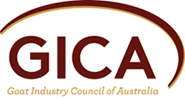The Goat Industry Council of Australia (GICA) remains committed to strengthening the current National Livestock Identification System (NLIS) Sheep and Goat traceability system. As such GICA, with input from the Dairy Goat Society of Australia (DGSA), commissioned a desktop study on ‘NLIS Tagging Options for Australian Dairy Goats’. With GICA’s ongoing commitment to improving the […]
Guidelines for the voluntary control and eradication of CAE from individual herds
The dairy goat industry, through its representatives on the Goat Industry Council of Australia (GICA), have requested the development of voluntary guidelines to assist producers control and eradicate Caprine Arthritis Encephalitis (CAE) from their herds. These guidelines have been developed for use by veterinarians in partnership with their goat producer clients to achieve effective CAE control. […]
Food safety test for red meat producers
Australian cattle, sheep and goat producers will have their knowledge of on-farm food safety requirements assessed from January next year. For the first time, producers will need to successfully complete a compulsory online assessment in order to renew their Livestock Production Assurance (LPA) accreditation. “The assessment is a really important part of a nationwide push […]
The electronic identification system for sheep and goats in Victoria should remain mob-based
The national Peak Industry Councils representing and promoting the needs of Australia’s lamb, sheepmeat, wool producers and the goat industries have provided comment on the draft consultation paper “Electronic National Livestock Identification System (NLIS) (Sheep & Goats) – A transition package for Victoria”. Richard Halliday, WoolProducers Australia President says that the Councils recognise the importance of traceability […]
Important changes to Australia’s Biosecurity System
Important changes to Australia’s Biosecurity System came into effect on 16 June 2016 with commencement of the Biosecurity Act 2015. The Biosecurity Act replaced the Quarantine Act 1908 and is designed to be flexible and responsive to changes in technology and future challenges. The Act: provides a modern regulatory framework reduces duplication and regulatory impacts […]
New plan doesn’t kid around with CAE and JD
Two slow acting, insidious and incurable diseases afflict goats: caprine arthritis encephalitis (CAE) and Johne’s disease (JD). However, the National Kid Rearing Plan offers Australian goat producers actions that provide an alternative to watching animals suffer and counting the cost in lost production and spreading infection. Goat producers can minimise the risk of infection by using the […]
Terms of Reference: Animal health advocacy for GICA
GICA is seeking a consultant to assist with policy development in the animal health, welfare and biosecurity portfolio (covering Animal Health Australia (AHA) program areas) and the food safety and industry systems portfolio (covering National Residue Survey (NRS) program areas). For more information, please read the Terms of Reference. […]
WA Subsidised Disease Investigation Pilot Program
The Subsidised Disease Investigation Pilot Program is delivered by the Department of Agriculture and Food, Western Australia (DAFWA), as part of the Boosting Biosecurity Defences Project and is funded through the Royalties for Regions program. This pilot program aims to boost Western Australia’s capacity to detect exotic animal diseases early by reducing the cost to […]
Goat industry maps pathway to prosperity
The Australian goat industry is set to take on-farm practices, production and exports to the next level with the release of a new five-year research and development plan. Developed by the Goat Industry Council of Australia (GICA), with support from Meat & Livestock Australia (MLA), the Goatmeat and Livestock Industry Strategic Plan 2020 details clear […]
Evaluating the economic impact of wild dogs in Western Australia
A recent report published by Meat and Livestock Australia (MLA), Assessment of the impact of wild dogs on the Western Australian rangeland goat industry, identifies wild dogs as the major factor currently contributing to a precipitous decline in rangeland goat production in Western Australia. The report estimates goat losses from wild dogs are worth about […]
